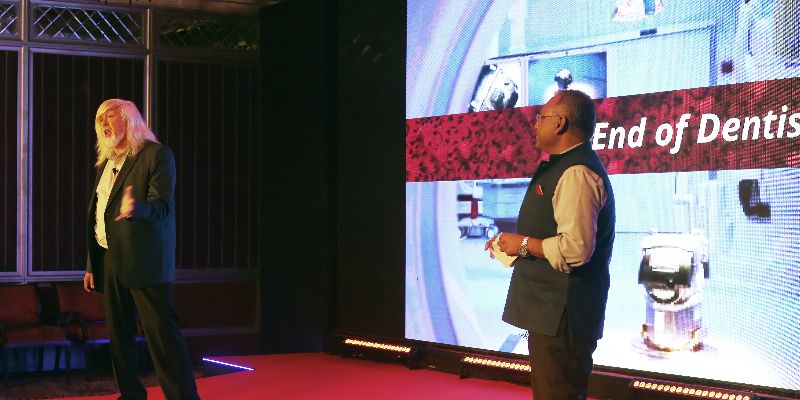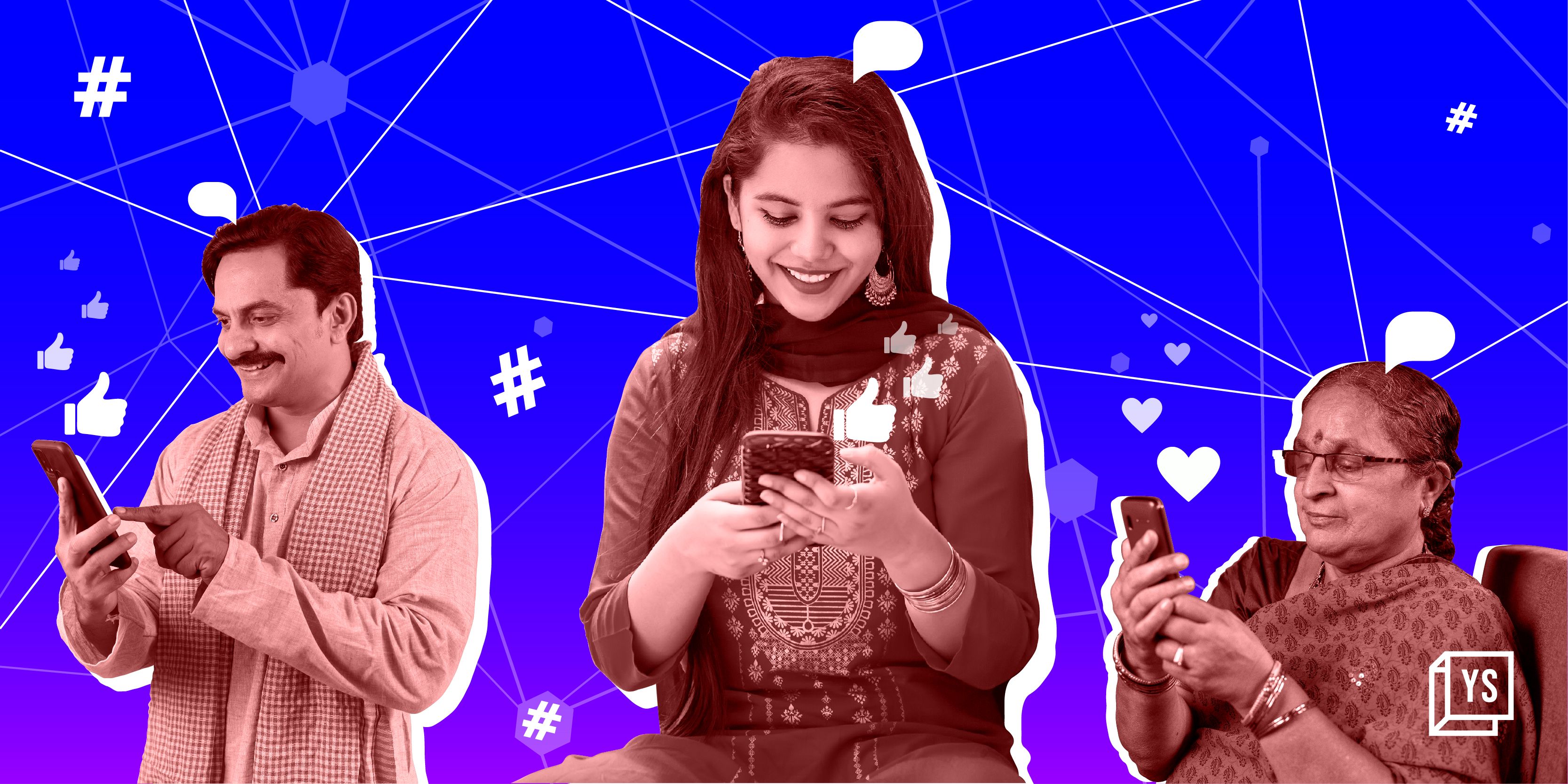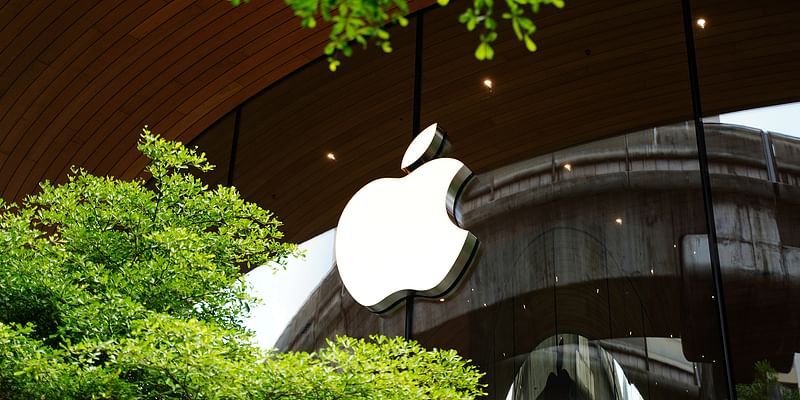How ice cream maker Ben & Jerry’s inspired ThoughtWorks' foundation
Here’s how an ice-cream maker inspired ThoughtWorks, a software company, to develop its three-pillar approach to technology solutions and go global. Also, an overview of what startups and businesses need to do to ensure they are ready for the fourth industrial revolution or Industry 4.0.
Soft instrumental music played in the background as I sat at a restaurant table opposite to Dan McClure, Innovation Design Lead, and Sagar Paul, Head (Client Services - Strategic Accounts) at ThoughtWorks.
Headquartered in Chicago, Illinois, ThoughtWorks is a global software company. With 4,500 employees spread across 42 offices around the globe, it aims to think disruptively and deliver technology to address their clients' challenges.
ThoughtWorks recently opened a new office in Whitefield, Bengaluru, to leverage the city’s diverse talent pool, and to accommodate the year-on-year growth of more than 20 percent for the next five years. Apart from this new space in Whitefield, ThoughtWorks has other offices across India —Koramangala in Bengaluru, Gurugram, Hyderabad, Pune, Chennai, and Coimbatore.
I placed my phone on the table and disclosed to them that I was recording the conversation for internal reference. Without missing a beat, Dan too placed his phone on the table and then jovially remarked,
I’m placing my phone on the table too. Not because I’m recording, but because it is too big to fit in my pocket.
Laughter ensued and the ice was broken. The next 50 minutes were filled with insights and humour around how ThoughtWorks functions, how technology has changed and is changing the world. Here are some of the key highlights from the discussion.

What ThoughtWorks has in common with ice cream maker Ben & Jerry’s
“Over the last couple of years, we've been using a three-pillar model to describe the way we like to think of ourselves….We've found this three-pillar model a very effective way to think about the multiple aims that we have as a company. As we are pondering decisions, it's useful to think about how a decision looks from each pillar individually as part of coming to a rounded decision,” Martin Fowler, Chief Scientist at ThoughtWorks, mentions in a blog post titled Three pillars.
The three-pillar approach was in fact inspired by Ben & Jerry’s, the ice-cream maker.

Talking about the three pillars, Sagar said, “All our activities have to support all three pillars. We don’t segregate and say hey this is a pillar one or two activity.”
Sagar then elaborated on what each of the three pillars stood for from the ThoughtWorks’ perspective:
(1) Building sustainable business
(2) Software excellence
(3) Social justice

Source- ThoughtWorks website
Talking about software excellence, Sagar said,
We believe that not many organisations in the technology space, focus on software processes and excellence.
Elaborating on social and economic justice, Dan added, “Our original founder was very involved in social activities, way before he became involved in the tech space. So instead of taking the usual path of a technologist who gets a heart later on, he started out with a heart.”
How to make global collaborations work in a tech-driven world
As a global organisation, ThoughtWorks noted that its new India office has already mapped its growth to developing digital innovations specifically for its Global In-house Center (GIC) customers. Some of these commitments span APAC, UK and global players, across the hyperlocal transport, energy management, and retail sectors.
Going forward, the Bengaluru office will spearhead the company’s future-focussed technology and digital products. The space will adopt a shared service model which aims to create a common pool of people who collaborate across capabilities, around data and product development. The new office with a 300-people seating capacity will also leverage tech-community events, for wider networking that caters to data and digital interests.
Additionally, the space aims to follow through on a mandate to advance technology and economic growth on a global scale. This will happen through programmes designed to help startups, enterprises and governments navigate global megatrends from theory to strategic implementation, using a Tech@Core approach.

Source- Industry 4.0
Describing the onset of Industry 4.0 in a research paper, which Dan co-authored with Sai Mandapaty, Chief Commercial Officer at ThoughtWorks, he observes, “The fundamental change that shifts the role of technology from creating “digital assets” to being pervasively embedded within a “digital business”, an organisation whose most creative market opportunities are shaped and enabled by technology.”
Dan said that earlier technology used to be like plumbing. “If one had a plumbing problem, they called the plumber and got it fixed. Now technology and business functions have almost merged, technology is a partner that helps people figure out how to solve problems.”
Dan noted that instead of working in silos and throwing ‘stuff over walls’, leadership teams now collaborate and work together. This paradigm shift has led to new roles like that of the digital strategy officer, who sits between the CIO and the business person to bring in both perspectives.
While Dan agreed that technology is taking away jobs, he countered that it is simultaneously creating new jobs, which for him are more exciting because they demand big-picture thinking and more autonomy. He said, “Understanding local problems and then getting diverse group of people to work together is the way forward.”
Technology has also made cross-border collaboration easier. But too much collaboration sometimes leads to internal team conflicts, because of different thought processes and cultures. Dan and Sagar agreed that the best way to prevent unnecessary conflicts is to have open discussions and face-to-face meetings when possible. They joked that they had been mispronouncing each other’s name for some time and only recently learnt the correct way to address each other. Sagar said,
The way I look at cultures is not to find a common path, but instead to celebrate the differences. Identifying this will make it easier to work together…. At ThoughtWorks, structures have been created to ensure certain countries work together and learn from each other. And these countries need not be geographically adjacent.
How Technology and ‘thinking different’ is leading to disruption
Ambitious leaders see complex systems around them and make changes to key components. Dan explained that the modern software developers are much more empowered than their predecessors. Many have the power to make architectural choices and business decisions now. He said,
The core of disruption is about seeing some fundamental element of a system differently. Uber saw the ownerships of taxis and drivers in a different way… If one embraces the really hard problems, then it is possible to accomplish tasks which were considered impossible years ago. The fact that impossible things can be done now is really energising to some people.
Sagar interjected that modern technology makes it easier to achieve scale and has increased the odds of success. He said, “Technology has also made it possible to manage scale which has been a messy problem historically. Cloud computing and AI are now at the core of businesses.”
Dan and Sagar believe that courageous executives and CXOs need to talk more about ambitious missions and drive them forward. To facilitate this, ThoughtWorks conducts ‘ThoughtWorks Live’ sessions around the world for CXOs and recently held one in Bengaluru. Sagar remarked,
The goal is to bring together courageous leaders from startups, enterprises and academia to cross pollinate ideas. In this messy world, we need great ideas to succeed…
Technologies that have the potential to bring seismic shifts in the future
When asked about which technology they see as the one with the biggest potential for impact in near future, Dan joked that he would like to dodge this question and provide an alternative perspective. He said,
Personally, I feel that focussing on individual technologies is a big distraction. That might make for a great feature story in magazines but the real potential is when technologies come together…. AI without accurate data is stupid AI, IoT without the ability to act is like your regular thermostat. So, multiple technologies coming together is what will make the difference.
Dan believes that these four pieces are key to making technology provide complete solutions:
- IoT, which will essentially become the eyes and ears for interacting with objects.
- Big data and the cloud, which lets you connect all these ‘eyes and ears’ together.
- Artificial intelligence and Machine Learning, which will build on top of big data and IoT to make decisions.
- Robotics, which can automate and build based on the above decisions.
Sagar also mentioned that ThoughtWorks has identified five ‘seismic shifts’ that are key technology bets on what will transform organisations across the world.

Talking about the changing nature of platforms, Dan cited the example of the shift from mainframes to personal computers and how big a shift that was. Now we have miniature plug-and-play devices like Raspberry Pi, which can make devices like TVs turn into a computer.
Sagar commented that technology has gone through drastic changes, things are not what they looked like in the past. Use cases too have changed. He said,
Graphics processing unit (GPUs), which were popular in gaming computers, provide for parallel processing; hence, they are now being used when you have to leverage AI and run a neural net that needs to be processed and re-processed....
Sagar and Dan agreed that startups and enterprises have to be smart and keep up with the times to succeed. Sagar said,
“Opportunities are no longer at the centre but at the fringes of the things you cannot control.”
Website- ThoughtWorks











